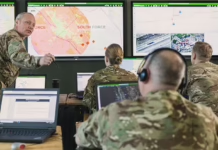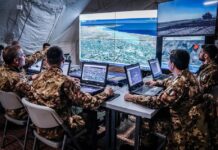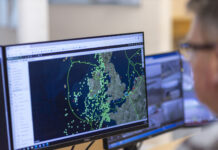Denmark-headquartered command-and-control (C2) specialist Systematic has delivered some insight into its upcoming BattleCloud application: the latest cloud-based addition to the company’s SitaWare suite of C4ISR solutions.
Delivering a presentation to a select audience at Systematic’s facilities at Farnborough Airport in the UK on 28 April 2025, Andrew Graham, the company’s UK senior vice president for business development in defence, outlined the key capabilities of BattleCloud, which will be officially launched in July 2025.
“BattleCloud is a term we’re using to encompass a number of cloud-native product offerings that really drive SitaWare from a Windows or platform-centric deployment environment into a true cloud-native environment,” he explained.
Graham noted three key points in relation to what BattleCloud delivers. Firstly, Systematic has recognised, said Graham, that with the advent of Starlink and other satellite communication providers, it is now possible to access a C2 headquarters from a client application on a mobile device from many more locations than would have been possible three to five years ago using a cloud-based connection.
Secondly, Systematic has focused on making it really simple to take a frontline tablet device, or the company’s SitaWare Edge C2 system for dismounted units, which can be run on a mobile phone, and to connect and run that within a cloud setup.
The third element of BattleCloud, said Graham, is that “if you are an organisation that actually can run in a VPN tunnel over a public internet connectivity – and for instance right now our training solution, SitaWare Aspire, we can host that for our customer to do training – we’re also seeing scenarios where it makes sense to actually host the whole command-and-control infrastructure for our custumers.”
For this Systematic would typically use the Microsoft Azure cloud computing service, as this offers a good degree of flexibility as to where the servers are hosted, although Graham noted that the company could look at other cloud service options, depending on customer requirements.
Regarding such hosting, Graham said, “We’re already doing it for the Danish Home Guard, we’re already now doing it for training customers. We think there are – in some exercise scenarios, in providing military aid to civil emergencies, for example – quite a few different scenarios where us actually hosting that as a cloud service for our customers makes sense.”
BattleCloud also significantly increases the power and capability of SitaWare Insight – Systematic’s artificial intelligence (AI) enhanced application for delivering critical insight from unstructured data, which the company developed a few years ago – as SitaWare Insight was developed from the outset to be cloud native.
Meanwhile, in the autumn of 2025 Systematic is additionally set to release version 7.0 of its SitaWare Headquarters C4ISR solution, which is also a fully cloud-native implementation of that product.
Further noting the advantages of BattleCloud, Graham explained that, “Typically, in most of our deployments worldwide, we’re running SitaWare Headquarters on a Windows server platform. You have a server running, you can duplicate those servers for backup and redundancy and what we call a Microsoft cluster, but it’s not native, meaning all of your server-side software is running as one process on that server.
“A cloud-native environment is typically a Linux environment and you build the server side so that different components of that server infrastructure – your storage; the parts that process all the incoming track information, notifications, chat, all of those different components that make up the services in the background server side – are broken up into separate services or containers in a cloud, which means each container can actually be running on separate hardware, and you don’t need to know where it is,” said Graham. “So if we want to scale the number of users, or we want to scale the number of tracks, we’re able to process that. As my problem gets bigger, and the amount of data gets bigger, I can just throw more computing power at different parts of that server infrastructure, so when we say cloud native, it really, truly is developed to run in the cloud.”
Graham additionally mentioned that being able to host data somewhere in the cloud and have it distributed over many different places is a significant advantage for ensuring the redundancy and security of that data, noting that, when attacked by Russia in 2022, the Ukrainian armed forces “moved all their command and control and put it in the cloud almost on day one – because that was the way they could keep the continuity of their command-and-control capability”.
Systematic has recognised that there will certain scenarios – such as with a forward-deployed command post where there is limited bandwidth – where a customer might still prefer to run SitaWare software from a Window-based server. The company will therefore continue to support such Windows-based applications while also unleashing the power of cloud-based computing solutions for, for example, higher-echelon headquarters with access to government or military cloud-based services.
Meanwhile, Systematic has been developing additional tools to enhance the utility of its suite of SitaWare products, including tools for Signal chat, weather information, route planning, locating points of interest, incorporating satellite imagery, briefing tools, and developing enemy orders of battle. The company is also exploiting AI to develop capabilities in terrain analysis, change detection, doctrine recognition and threat analysis.





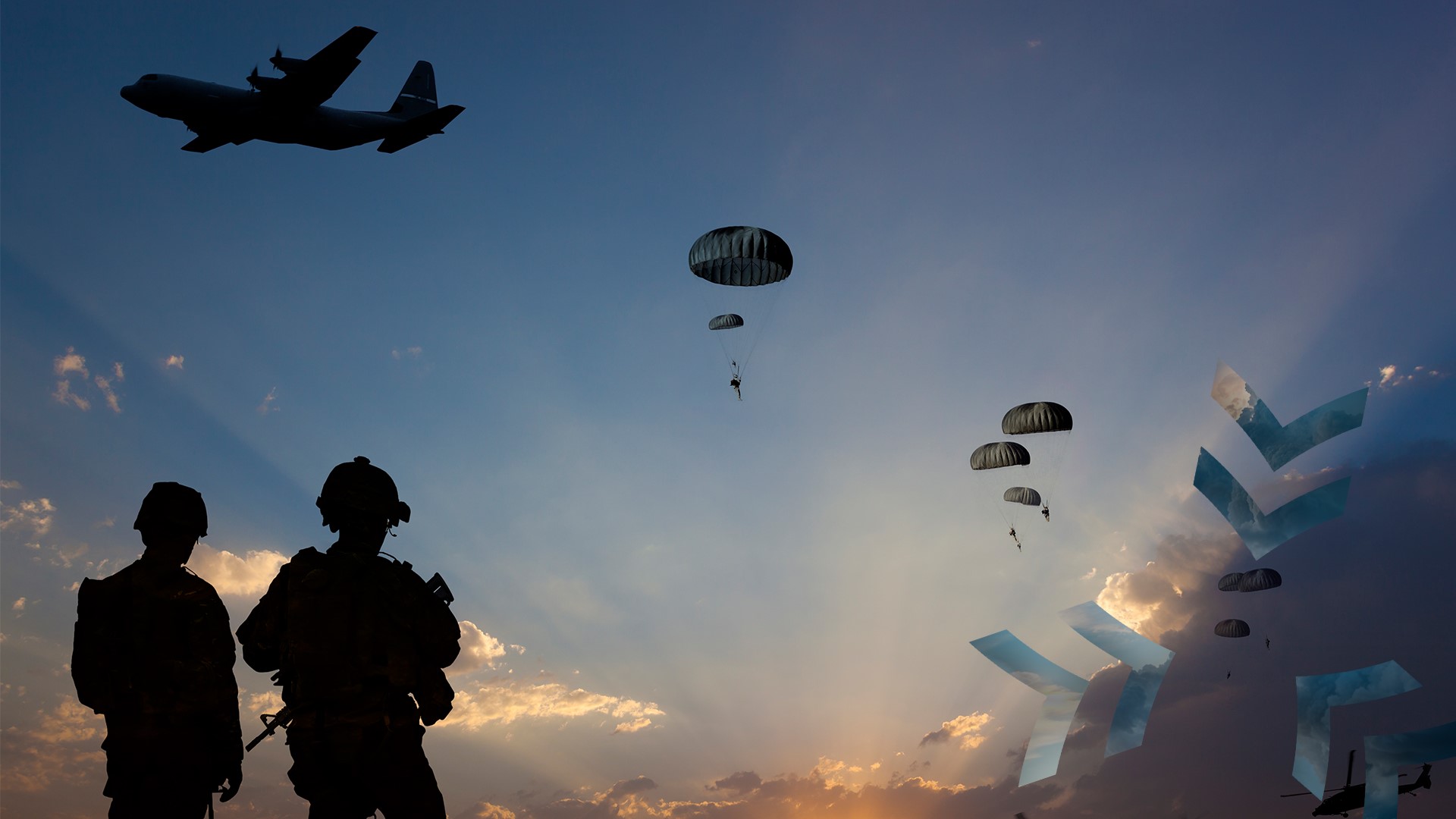

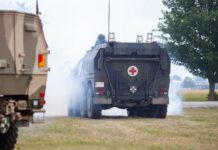
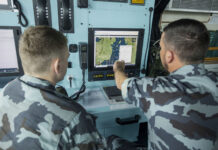

![The continuing evolution of tube artillery The 8×8 variant of the CAESAR SPH on display at the Eurosatory 2024 exhibition. [Tank Encyclopedia, courtesy photo]](https://euro-sd.com/wp-content/uploads/2025/08/caesar-8x8-at-eurosatory-2024-Kopie-218x150.jpg)
